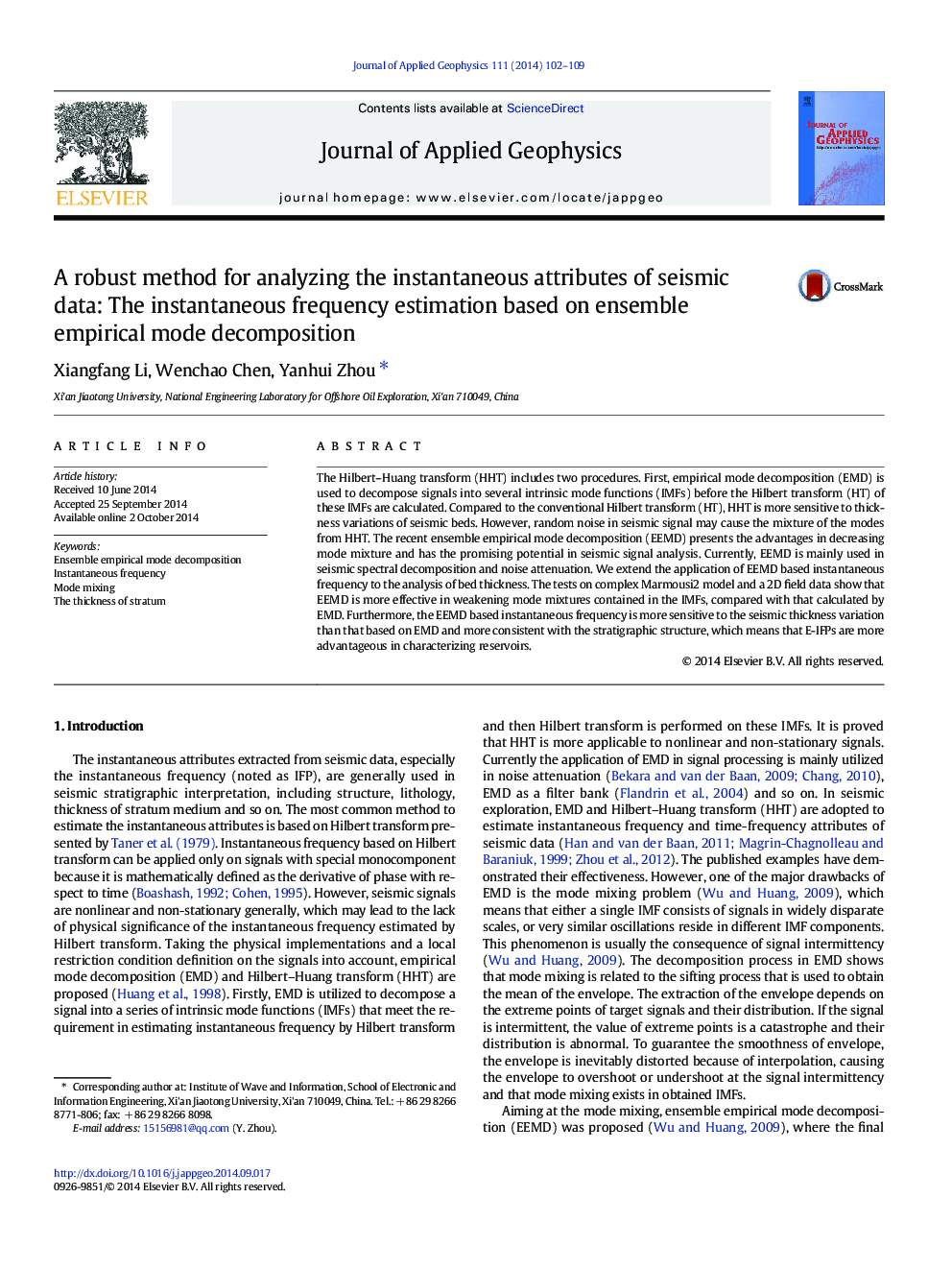| Article ID | Journal | Published Year | Pages | File Type |
|---|---|---|---|---|
| 4740093 | Journal of Applied Geophysics | 2014 | 8 Pages |
•Mode mixture caused by random noise is more severe in conventional EMD.•Mode mixture becomes weakened in EEMD.•EEMD based instantaneous frequency is more robust to thickness variation.
The Hilbert–Huang transform (HHT) includes two procedures. First, empirical mode decomposition (EMD) is used to decompose signals into several intrinsic mode functions (IMFs) before the Hilbert transform (HT) of these IMFs are calculated. Compared to the conventional Hilbert transform (HT), HHT is more sensitive to thickness variations of seismic beds. However, random noise in seismic signal may cause the mixture of the modes from HHT. The recent ensemble empirical mode decomposition (EEMD) presents the advantages in decreasing mode mixture and has the promising potential in seismic signal analysis. Currently, EEMD is mainly used in seismic spectral decomposition and noise attenuation. We extend the application of EEMD based instantaneous frequency to the analysis of bed thickness. The tests on complex Marmousi2 model and a 2D field data show that EEMD is more effective in weakening mode mixtures contained in the IMFs, compared with that calculated by EMD. Furthermore, the EEMD based instantaneous frequency is more sensitive to the seismic thickness variation than that based on EMD and more consistent with the stratigraphic structure, which means that E-IFPs are more advantageous in characterizing reservoirs.
